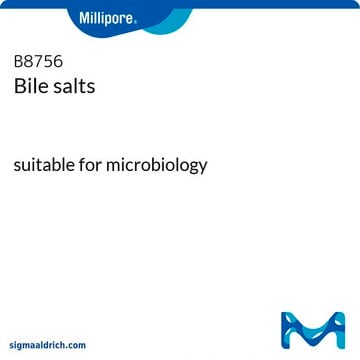ABS547
Anti-Pancreatic Lipase/PNLIP Antibody
serum, from rabbit
Sinônimo(s):
Pancreatic triacylglycerol lipase, PL, PTL, Pancreatic lipa, Pancreatic Lipase/PNLIP
About This Item
WB
western blot: suitable
Produtos recomendados
fonte biológica
rabbit
Nível de qualidade
forma do anticorpo
serum
tipo de produto de anticorpo
primary antibodies
clone
polyclonal
reatividade de espécies
mouse, rat, human
técnica(s)
neutralization: suitable
western blot: suitable
nº de adesão NCBI
nº de adesão UniProt
Condições de expedição
wet ice
modificação pós-traducional do alvo
unmodified
Informações sobre genes
human ... PNLIP(5406)
Descrição geral
Especificidade
Imunogênio
Aplicação
Signaling
Signaling Neuroscience
Western Blotting Analysis: A representative lot detected both wild-type and W340X mutated recombinant human pancreatic lipase-related protein-2 (PLRP2) in culture media and lysates from transfected 293T and COS-7 cells (Xiao, X., et al. (2011) J. Biol. Chem. 286(30):26353-26363).
Neutralizing Analysis: A representative lot inhibited colipase-dependent pancreatic lipase-related protein-2 (PLRP2) enzymatic activity in pancreas extracts from 4-day old mice (D′Agostino D, and Lowe ME. (2004) J. Nutr. 134(1):132-134).
Qualidade
Western Blotting Analysis: A 1:5,000 dilution of this antibody detected Pancreatic Lipase/PNLIP in 10 µg of human pancreas tissue lysate.
Descrição-alvo
forma física
Armazenamento e estabilidade
Handling Recommendations: Upon receipt and prior to removing the cap, centrifuge the vial and gently mix the solution. Aliquot into microcentrifuge tubes and store at -20°C. Avoid repeated freeze/thaw cycles, which may damage IgG and affect product performance.
Outras notas
Exoneração de responsabilidade
Não está encontrando o produto certo?
Experimente o nosso Ferramenta de seleção de produtos.
Código de classe de armazenamento
10 - Combustible liquids
Classe de risco de água (WGK)
WGK 1
Certificados de análise (COA)
Busque Certificados de análise (COA) digitando o Número do Lote do produto. Os números de lote e remessa podem ser encontrados no rótulo de um produto após a palavra “Lot” ou “Batch”.
Já possui este produto?
Encontre a documentação dos produtos que você adquiriu recentemente na biblioteca de documentos.
Active Filters
Nossa equipe de cientistas tem experiência em todas as áreas de pesquisa, incluindo Life Sciences, ciência de materiais, síntese química, cromatografia, química analítica e muitas outras.
Entre em contato com a assistência técnica








